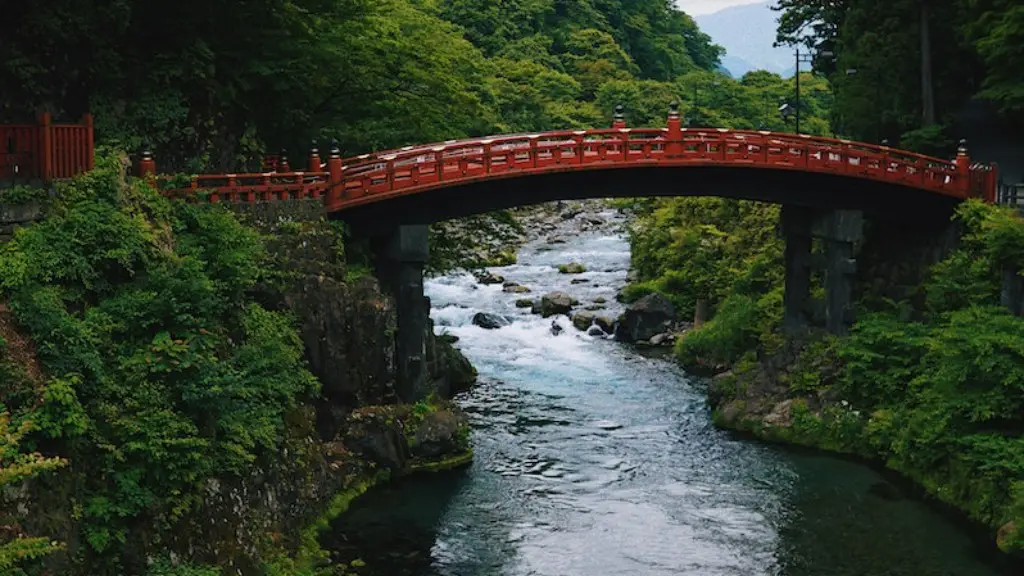Did the Yangtze River Dry Up?
Once one of the mightiest and longest rivers in the world, the Yangtze River stretches 6,300 kilometers from the Tibetan Plateau to the East China Sea. Arguably the most iconic river in China and the lifeblood of this ancient Eastern civilization, the Yangtze has been vital in the development of Chinese culture and traders for centuries, providing a connection between Northeast Asia and Southeast Asia.
In recent times however, there has been much debate over whether the Yangtze is actually drying up. With much of the river’s water being utilized for hydroelectric power and for growing crops, its flow has slowed significantly throughout the decades and its water levels have dropped dramatically. For over a decade, the Yangtze has suffered from water shortages and pollution, leading to an increased number of droughts along its long course.
The effects of these droughts can be felt throughout China. Along the upper Yangtze, low river levels have sent shock waves through hydroelectric companies, industries, and even urban populations downstream. In the large cities of Chongqing and Wuhan, domestic supplies threatened by droughts have largely been staved off thanks to government-built reservoirs, but the increasing scarcity of water has taken its toll on agricultural productivity.
China’s Ministry of Water Resources has gone to great lengths to combat these effects. In response to the 2018 drought, the government released over 500 million cubic meters of water from its Upper Yangtze reservoirs, amounting to the largest water release in modern Chinese history. In addition to this, there has been a major push towards more effective water management strategies, such as more efficient irrigation, drought resistant crops, and better water conservation practices.
However, many experts agree that these measures are only short-term solutions to combat the issues faced by the Yangtze and its people. Studies have shown that if the current rate of water consumption continues, the river could be reduced to a small stream in less than 20 years. This, along with the effects of climate change, has left the future of the Yangtze in a precarious state and has highlighted the devastating impacts that over-exploitation of resources can have on the environment.
If nothing is to be done, then the Yangtze River may indeed dry up, taking with it the thousands of species that currently inhabit the river and its tributaries, and leave many of the cities and communities that rely on it for water and power without their most vital resource. It would be a tragedy, not just for China, but for all of humanity, if the Yangtze were to become the next major casualty of environmental degradation.
Government Intervention
In order to stave off disaster, the Chinese government has begun to take proactive steps to reduce water consumption and improve water management. In addition to the reservoir releases mentioned earlier, dams and other large infrastructure projects have been built to maximize water supply, while relatively inexpensive measures such as desalination plants have also been employed.
The government has also placed a strong emphasis on water conservation, introducing campaigns to raise awareness of water shortages and encouraging people to use water sparingly. To further reduce water consumption, water tariffs for industries and companies have gradually been increased, resulting in a drop in water usage in recent times.
Despite these efforts however, it appears that the water crisis still has a strong hold in China, and the government is still struggling to find a long-term solution to the issue. Scientists suggest that for any real progress to be made, a new river conservation law needs to be implemented that would penalize companies and industries that are over-exploiting the river and its tributaries. Only then can the Yangtze River be saved.
Environmental Impacts
The effects of the drying up of the Yangtze are far-reaching, extending well beyond China and affecting the environment on a global scale. As the Yangtze’s water levels drop, the threat of desertification looms ever larger, both in China and across Asia. With its vast watershed, the Yangtze is essential for the regulation of moisture in the region, preventing the desertification of more coastal regions and even in other continents.
The river is also a vital habitat for hundreds of species, many of which are critically endangered or threatened. As the river continues to dry up, species like the Chinese alligator, the Yangtze River dolphin, the Chinese sturgeon, and the finless porpoise have found themselves under increased threat of endangerment or extinction.
The effects of over-exploitation are also felt far beyond the species that inhabit the Yangtze. Hundreds of thousands of people rely on the river for their livelihood, from fishermen and farmers to merchants and traders. As the river dries up, these people are being pushed to the brink of poverty, with many villages along the river’s path vanishing as a result of the water shortages.
Political Factors
The plight of the Yangtze River is further complicated by poor governance and the political turmoil that exists in the region. Despite the abundance of water that flows through the region, it has been exploited to an extent that has caused irreversible damage to the river’s environment.
Much of the blame for this lies with the Chinese government, which has largely been unwilling to implement any real change or address the underlying issues that have caused the water shortages. For example, despite the drought that plagued the upper Yangtze in 2018, the government was slow to respond and only acted when the situation had reached crisis levels.
This is not the only example of government inaction in the face of environmental degradation. Over the years, the Chinese leadership has made little effort to address the numerous environmental issues that plague the country. From the rampant deforestation that has destroyed thousands of acres of forests to the smog that has caused countless health problems in the nation’s largest cities, the government’s failure to act is seen by many as the cause of much of China’s environmental woes.
Investments in Technology
The Chinese government has made some efforts to address the depleting water levels of the Yangtze, most notably through investments in technology and research. In a bid to combat the effects of the water crisis, the government has poured billions of dollars into research for desalination, water treatment, and wastewater reuse technologies.
China is also leading the way in the development of renewable energy sources, such as solar and wind, as an alternative to hydroelectric power. This has enabled the country to reduce its dependence on water-generated electricity and has helped to alleviate the pressure on the Yangtze.
Another promising technology in development is the so-called “sponge river” concept. This ambitious endeavor intends to reverse the effects of climate change by reintroducing water back into the river’s natural hydrological cycle and restoring its health over time. While this technology is still in its early stages, it may prove to be an effective solution to the current state of the Yangtze.
Rights to the River
As China’s population continues to grow and its economic development accelerates, so too does its demand for resources. With the Yangtze providing an essential supply of water, electricity, and food, conflicts over its use often arise between rival groups. In recent years, these disputes have become even more heated as the river continues to suffer from over-utilization.
The Chinese government has attempted to address these issues by introducing new laws and regulations to ensure that the Yangtze and its tributaries are managed more sustainably. These regulations have increased the government’s authority over the river, allowing them to monitor the flow and water levels of the river more closely and prosecute those who are breaking the new laws.
The Chinese government has also introduced a new system of “river rights” that grants individuals and companies the right to make use of the water from a given section of the river. This has allowed the government to better regulate and manage the river, while also helping to protect the rights of those who rely on the river for their livelihoods.
Future Outlook
Despite the various efforts to combat the water crisis, it is still too early to tell whether the Yangtze will be restored to its former glory. With the effects of global warming continuing to take hold, the water shortages and water pollution that plague the region are only expected to become worse.
The Chinese government’s efforts may well be too little, too late, as the damage to the environment and its inhabitants is already severe. It remains to be seen whether the government and its people will be able to turn the tide in time and protect the world’s third-longest river from total destruction.





